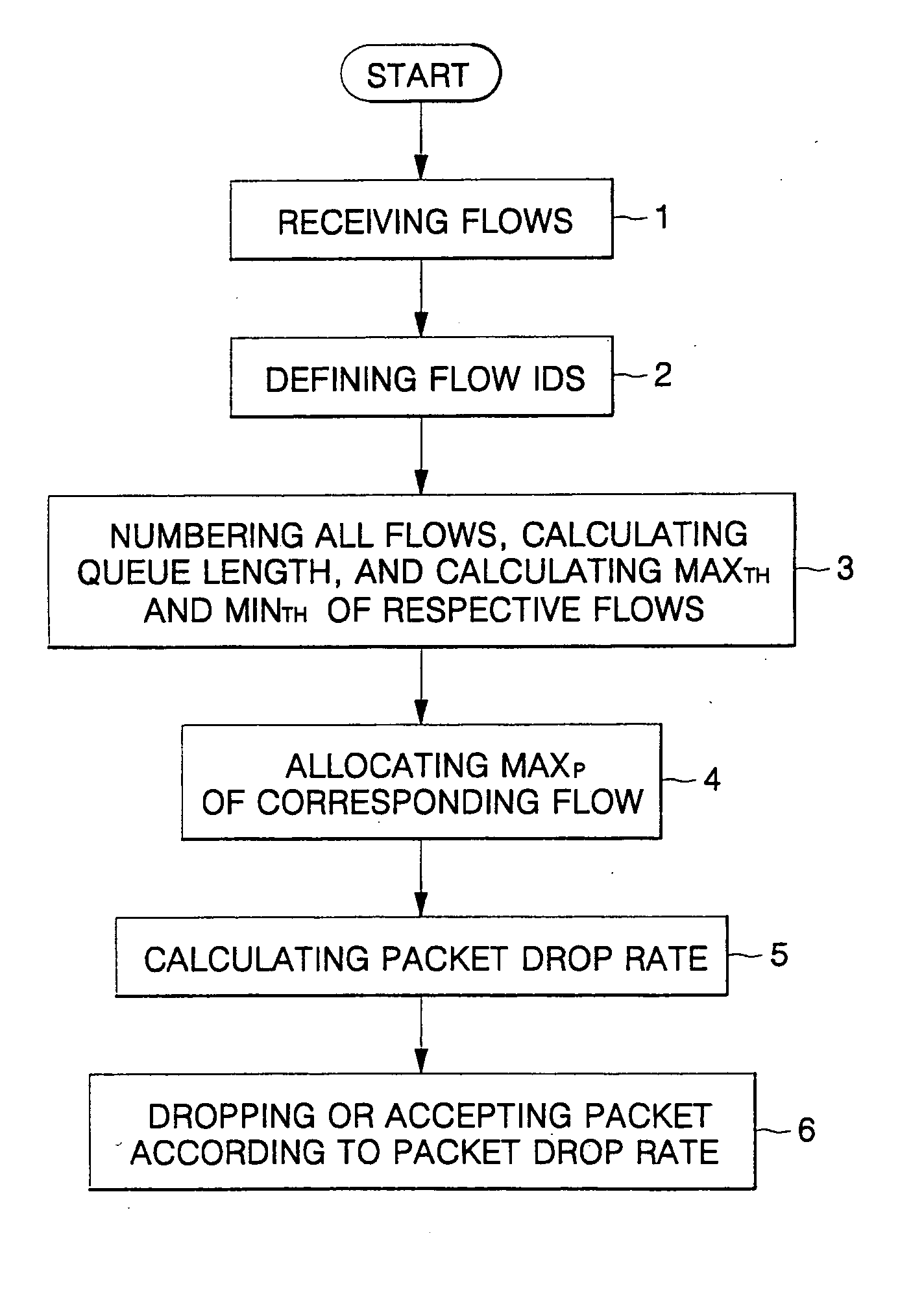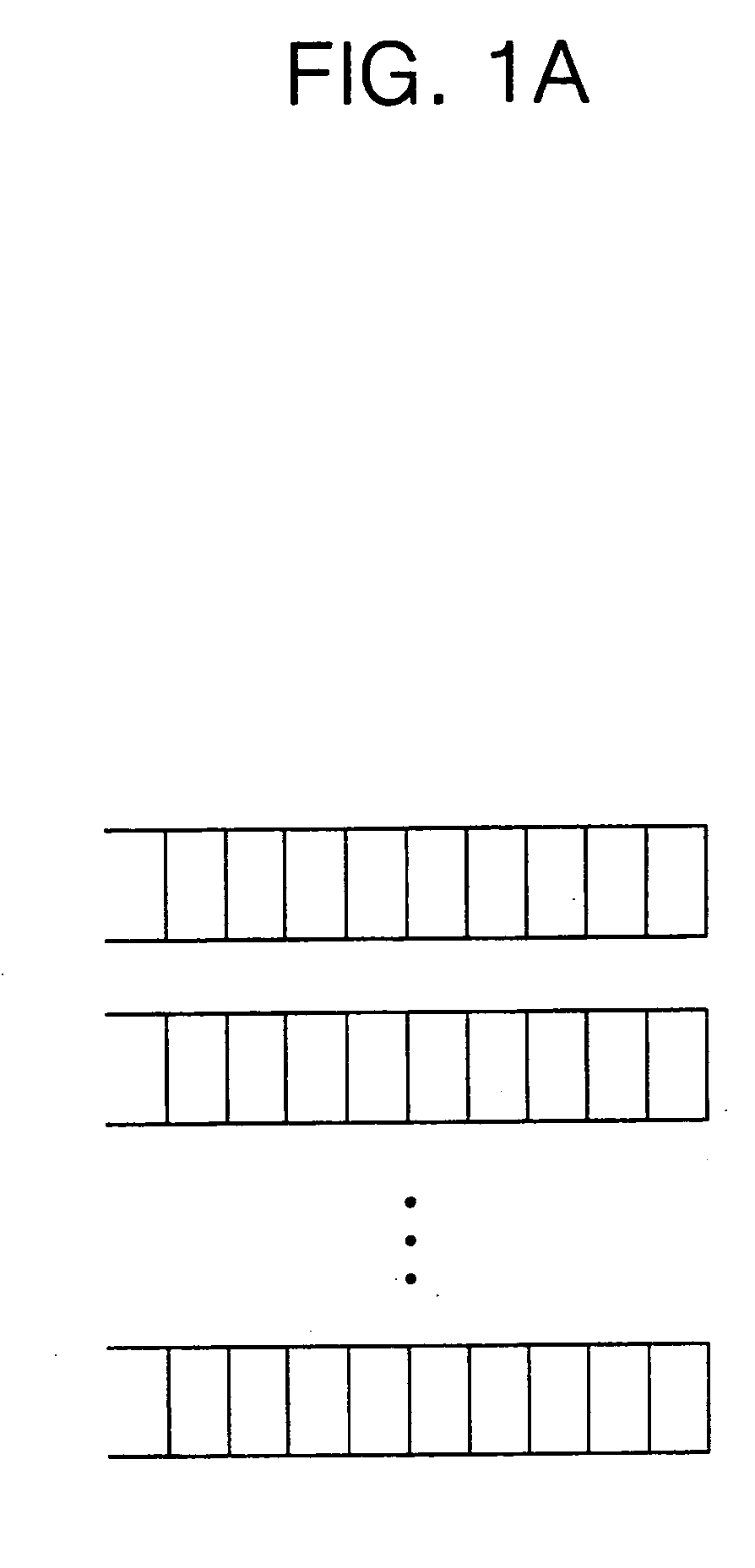Controlling packet congestion
a packet congestion and packet technology, applied in data switching networks, frequency-division multiplexes, instruments, etc., can solve the problems of preventing link use rate from falling, insufficient to cope with the explosive growth of internet traffic, and keeping a short queue length, so as to achieve stable quality of service
- Summary
- Abstract
- Description
- Claims
- Application Information
AI Technical Summary
Benefits of technology
Problems solved by technology
Method used
Image
Examples
Embodiment Construction
[0043]FIG. 1A is a view of queue types separated according to respective flows in a per-flow queuing method.
[0044] Referring to FIG. 1A, in the typical per-flow queuing method, separated queues for respective flows are prepared, and the separated queues are separately managed according to a round robin scheduling method. Thus, fair queuing is possible since the queues are managed by the round robin scheduling method. A system which uses the per-flow queuing has advantages of not only reducing a packet loss problem resulting from congestion but also reducing buffer requirements. On the other hand, there is also a disadvantage in that because the separated queues must be managed based on each flow, it is difficult to implement a fair allocation mechanism.
[0045]FIG. 1B is a view of a queue type in a FIFO method.
[0046] As shown in FIG. 1B, in the FIFO method, all flows flow into a single queue, and the flows are not separately managed. When congestion occurs, a packet is dropped so t...
PUM
 Login to View More
Login to View More Abstract
Description
Claims
Application Information
 Login to View More
Login to View More - R&D
- Intellectual Property
- Life Sciences
- Materials
- Tech Scout
- Unparalleled Data Quality
- Higher Quality Content
- 60% Fewer Hallucinations
Browse by: Latest US Patents, China's latest patents, Technical Efficacy Thesaurus, Application Domain, Technology Topic, Popular Technical Reports.
© 2025 PatSnap. All rights reserved.Legal|Privacy policy|Modern Slavery Act Transparency Statement|Sitemap|About US| Contact US: help@patsnap.com



